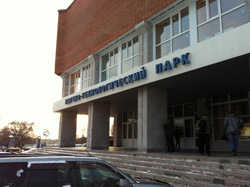Posted by Andy Pike, Friday 9 November 2012
 Enhancing our understanding of the ability of places to bounce back and rebound from disruptive economic change has become part of the zeitgeist in academic and policy circles across the world. A burgeoning debate has rumbled on about what constitutes and explains the ‘resilience’ of places in the face of financial crises, dangerous climate change and extreme weather events – CURDS has been actively contributing to the theory and practice of such issues:
Enhancing our understanding of the ability of places to bounce back and rebound from disruptive economic change has become part of the zeitgeist in academic and policy circles across the world. A burgeoning debate has rumbled on about what constitutes and explains the ‘resilience’ of places in the face of financial crises, dangerous climate change and extreme weather events – CURDS has been actively contributing to the theory and practice of such issues:
- Towards the resilient region (PDF: 458KB)
- Resilience, adaptation and adaptability? (PDF: 539KB)
Novosibirsk – a city of 1.5m people – in the Siberian region of Russia has demonstrated its ability to rebound from a close to 5% hit on its output following the global financial crisis which impacted the Russian economy hardest in 2009. The city has already bounced back to 5-6% GDP growth in 2012. Current CURDS research suggests several elements appear to have contributed to Novosibirsk’s resilience:
- ‘Mixed’ economy – following the collapse of the Soviet Union in the early 1990s and transition toward capitalist forms of economic organisation, Novosibirsk’s economy has evolved from the domination of the centrally planned command economy and the military-industrial complex toward a much more ‘mixed’ economy in which the state – federal, regional and municipal – remains key and the private sector has flourished with a diversified mixture of sectors (primary, secondary, tertiary and quaternary) and economic actors especially SMEs
- Geographical advantages – Novosibirsk’s location at the bridge between Europe and Asia – the old geographical centre of the Soviet Union – has underpinned its position as a transport hub, historically connected by Trans-Siberian road and rail routes and more latterly supporting its growth as a logistics centre linking its emergent and transition economic neighbours such as Kazakhstan.
- Innovation – in undergoing transition from the centrally-planned to the mixed market economy in Novosibirsk, the key economic actors have emphasised the importance of innovation both in parlaying the scientific and technical resources of the military-industrial complex into new avenues of growth and building a support infrastructure of technical centres, ‘technoparks’ (pictured above), business incubators and the like to embed and nurture innovation as part of the city’s economic growth model
- Crisis-hardened – the difficult days of transition during the early 1990s and the currency crisis in the late 1990s appear to have bred in the people and institutions in Novosibirsk a knack of coping with fragile and uncertain economic conditions and an ingenuity that seems capable of underpinning repeated recovery and reinvention.
CURDS is currently contributing to a review of entrepreneurship and small and medium-sized enterprise (SME) policy in Russia led by the OECD Local Economic and Employment Development (LEED) for the Ministry of Economic Development of the Russian Federation and the Russian Vnesheconombank. This follows the greater emphasis placed upon the critical role of new start-ups and SMEs in economic growth following President Putin’s aspiration for 60-70% of employment and 50% of GDP to be accounted for by SMEs by 2020.
